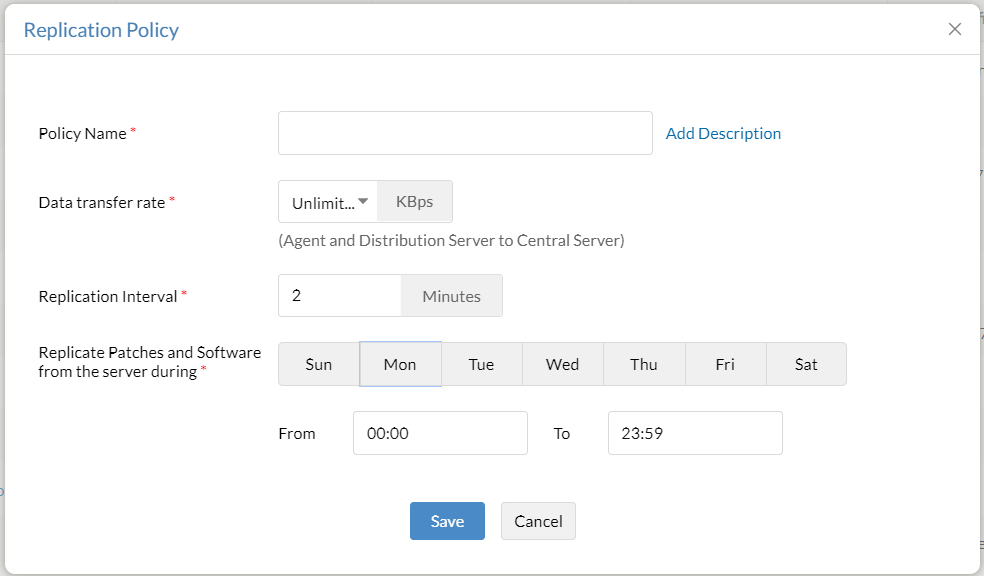Best practices for deploying replication policy to optimize bandwidth in distributed work models
Replication policies in Endpoint Central can be used to optimize bandwidth consumption in a distributed workforce system. Establishing a replication policy helps define parameters for data replication between Endpoint Central server and multiple distribution servers. Once configured, a replication policy will dictate how and when patch/software files should be replicated from the central server to remote offices in specific locations.
Each replication policy lets you define the following:
- Replication interval: The interval at which the distribution server can contact the Endpoint Central server to check for any files to be replicated.
- Data transfer rate: The rate at which data should be replicated from Endpoint Central server to the distribution server.
- Scheduler: The interval of time, or window, for replication of patch and software binaries from Endpoint Central server to the distribution server.

It is highly recommended to create and associate replication policies based on the network conditions in specific remote offices like bandwidth availability and non-business hours.
Points to keep in mind while configuring replication windows
- Schedule replication tasks during non-business hours or when network traffic is low. This ensures that critical operations like patch replication do not disrupt regular business activities by causing bandwidth congestion.
- Create different replication policies with network-specific replication windows for individual remote offices to avoid bandwidth bottleneck. This can help reduce the load on the central server as well as all the distribution servers involved.
- If the remote offices are spread across different time-zone, configure the replication window with respect to the central server time-zone.
- Regularly monitor and analyze the replication performance to identify and address any bottlenecks or issues. If necessary, adjust replication policy parameters, such as data transfer rate or time window, to optimize performance and ensure timely task distribution.
- Assign higher data transfer rates and shorter time windows to crucial tasks such as urgent software updates or security patches. This prioritization ensures that these tasks reach the endpoints promptly, reducing the risk of vulnerabilities and enhancing system security.
Examples
To better understand how and when replication policies can be employed in an enterprise network, let's take a look at a couple scenarios.
- Managing multiple remote offices
- Consider that the central server is installed in London (UTC time zone) and the distribution servers are installed in the UK and India, and the non-business hours are from 5:00 PM to 8:00 AM.
- Now the replication policy for the UK office has to be configured as 5:00 PM to 8:00 AM and the replication policy for India has to be configured as 10:30 PM to 1:30 PM.
- WFH users
- Remote users who contact the central server through the internet generally tend to have data speeds much lower than that in a LAN setup.
- In this case, the data transfer rate of the replication policy for WFH users should be configured with this bandwidth limitation in mind.
